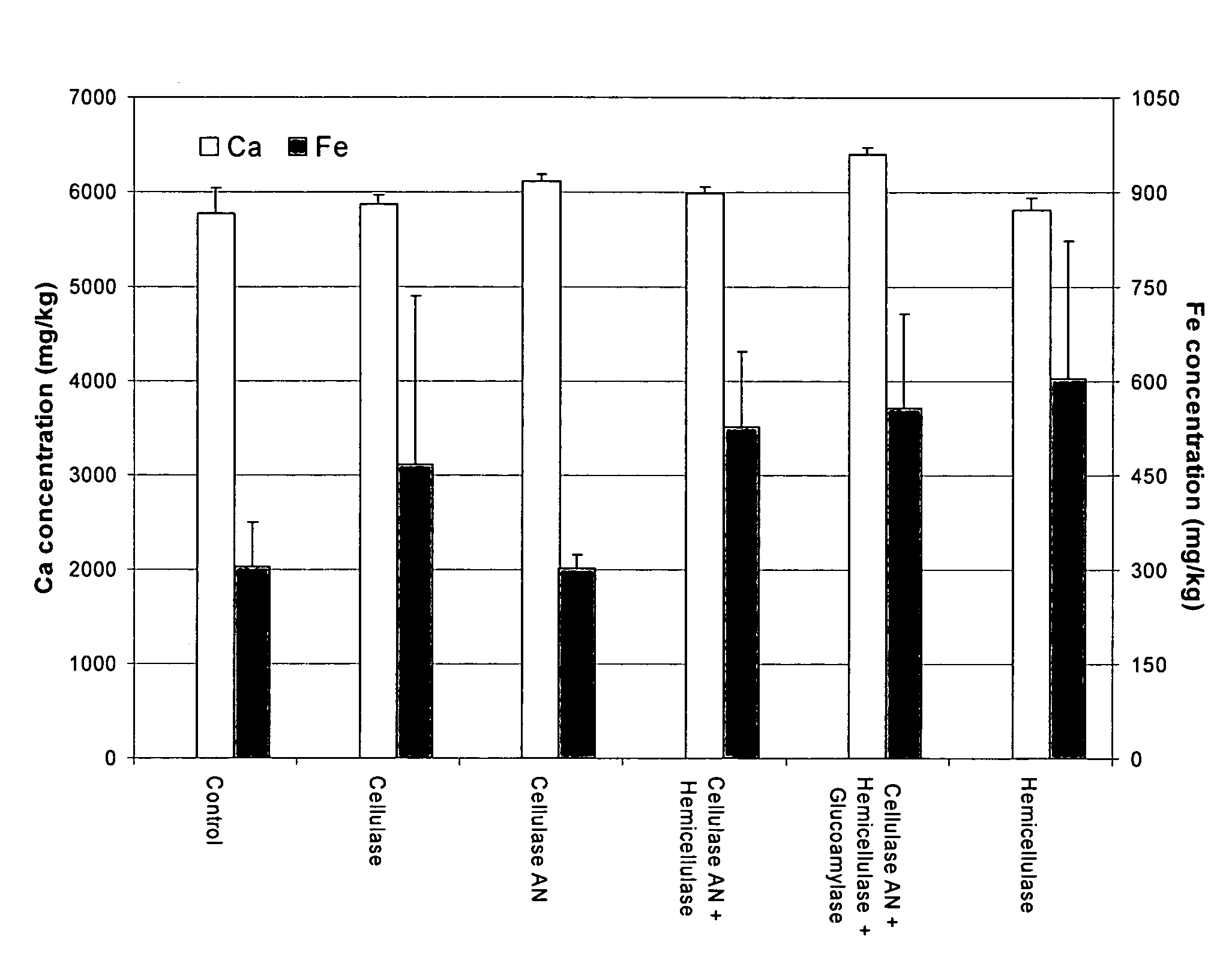Energy crops for improved biofuel feedstocks
a technology of biofuel feedstock and energy crops, which is applied in the field of energy crops for improving biofuel feedstock, can solve the problems of high capital and operating costs, need to dispose, and substantial challenges, and achieve the effects of improving the current state of contaminant recovery, reducing costs, and increasing yields of cellulosic ethanol
- Summary
- Abstract
- Description
- Claims
- Application Information
AI Technical Summary
Benefits of technology
Problems solved by technology
Method used
Image
Examples
example 1
Generation of Transgenic Tobacco
[0201] To generate the transgenic tobacco, wild-type tobacco was transformed with the E1 and then AtFLC genes using Agrobacterium tumefaciens as described below.
[0202] Description of the Donor. The endo-1,4-β-glucanase E1 gene (GenBank Accession No. U33212) was isolated from the thermophilic bacterium Acidothermus cellulolyticus. This bacterium was originally isolated from decaying wood in an acidic, thermal pool at Yellowstone National Park and deposited with the American Type Culture Collection (ATCC, Manassas, Va.) under collection number 43068 (A. Mohagheghi et al., Int. J. System. Baceril., 1986, 36: 435-443; Tucker et al., Biotechnology, 1989, 7: 817-820). As already mentioned herein, the bacterium has been characterized with the ability to hydrolyze and degrade plant cellulose.
[0203] For transformation into tobacco, the E1 catalytic domain was isolated from the genomic sequence and contained bp 950-2020 listed in Accession No. U33212. To gen...
example 2
Enzymatic Performance and Stability of E1 Tobacco
[0212] The stability properties of leaf protein concentrates and associated E1 cellulase activity in E1-FLC transgenic tobacco were characterized.
[0213] Leaf protein concentrates were prepared by macerating the tobacco leaves with ice in a blender at a ratio of 8:1 (w / 1). Samples of these extracts were analyzed for cellulase activity using carboxy-methyl cellulose. As shown in FIG. 16, extract from E1 plants but not wild-type tobacco can hydrolyze cellulase. Samples of these concentrates were also subjected to various conditions to determine the effect of refrigeration at 2° C., pre-heating the sample at 90° C., acidification to pH 4.0 with lactic acid, and drying the plant material prior to addition to external cellulase (Spezyme CP from Genencor International, Inc., Palo Alto, Calif.). Nine combinations of these variables were studied in the presence and absence of added cellulase (25 μL cellulase per mL).
[0214] The stability / act...
example 3
Phytoremediation Performance of E1 Tobacco
[0220] The present Applicants have previously demonstrated the use of tobacco in the phytoremediation of metals such as lead and uranium (Edenspace Systems Corporation, 2002, USEPA SBIR Phase I Report, Transgenic Citrate Synthase, Grant No. 68-D-02-018). A baseline comparison was conducted of the phytoremediation performance of non-transgenic tobacco strain vs. the E1 tobacco. Three performance indicators were assessed: (1) plant uptake of lead (Pb), a common soil contaminant; (2) extractability of Pb from the post-harvested biomass; and (3) effect of Pb in plant tissue on post-harvested cellulase activity.
[0221] Plant Uptake of Heavy Metals. Uptake of Pb and zinc (Zn) by the transformed tobacco was compared with wild-type and other tobacco varieties in Pb-contaminated soil E1-FLC transformed tobacco and Xanthi (non-transformed) tobacco were seeded in pots containing 300 g of soil with a Pb concentration of 800 mg / kg collected from a site ...
PUM
| Property | Measurement | Unit |
|---|---|---|
| Temperature | aaaaa | aaaaa |
| Temperature | aaaaa | aaaaa |
| Temperature | aaaaa | aaaaa |
Abstract
Description
Claims
Application Information
 Login to View More
Login to View More - R&D
- Intellectual Property
- Life Sciences
- Materials
- Tech Scout
- Unparalleled Data Quality
- Higher Quality Content
- 60% Fewer Hallucinations
Browse by: Latest US Patents, China's latest patents, Technical Efficacy Thesaurus, Application Domain, Technology Topic, Popular Technical Reports.
© 2025 PatSnap. All rights reserved.Legal|Privacy policy|Modern Slavery Act Transparency Statement|Sitemap|About US| Contact US: help@patsnap.com



